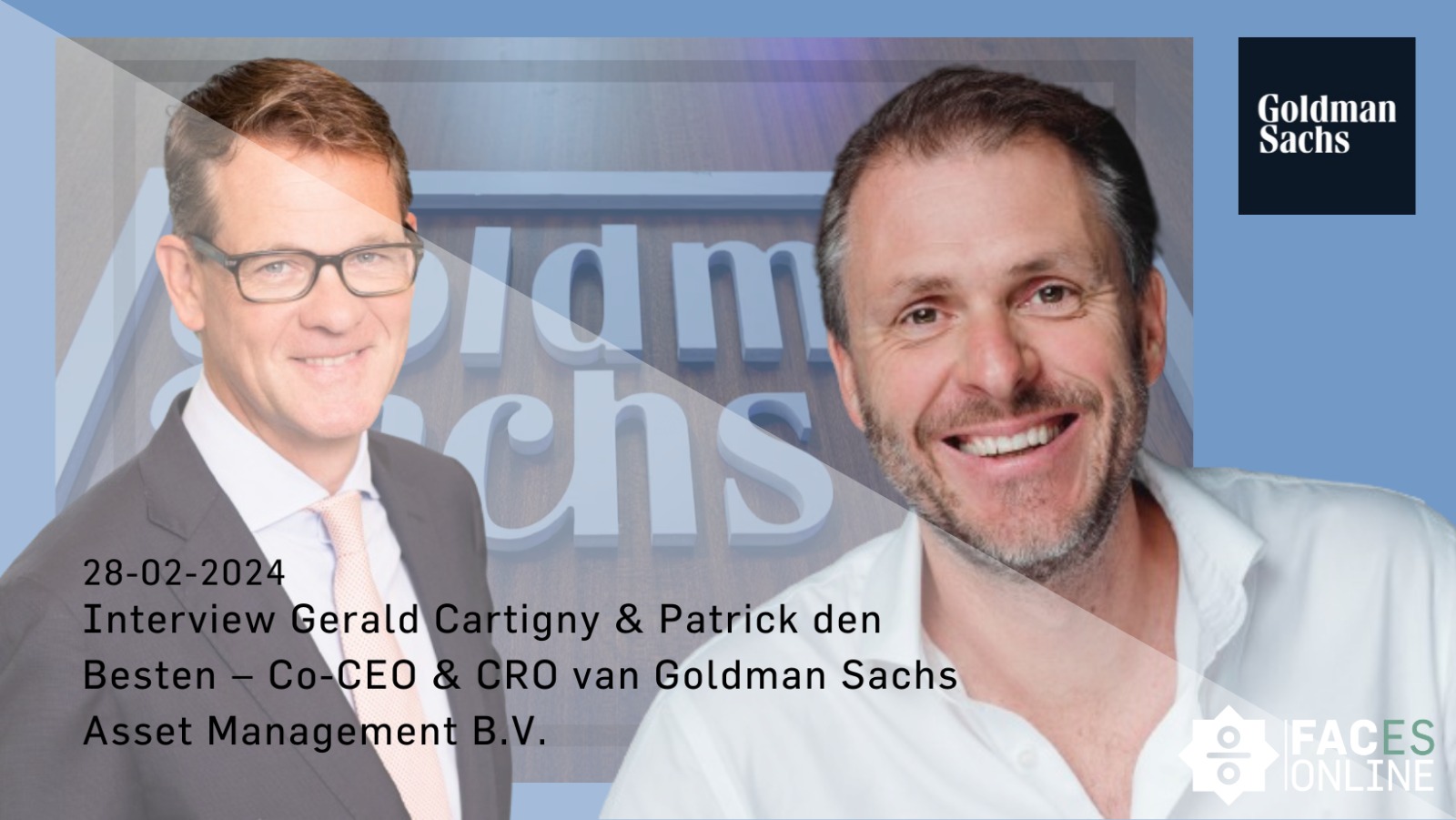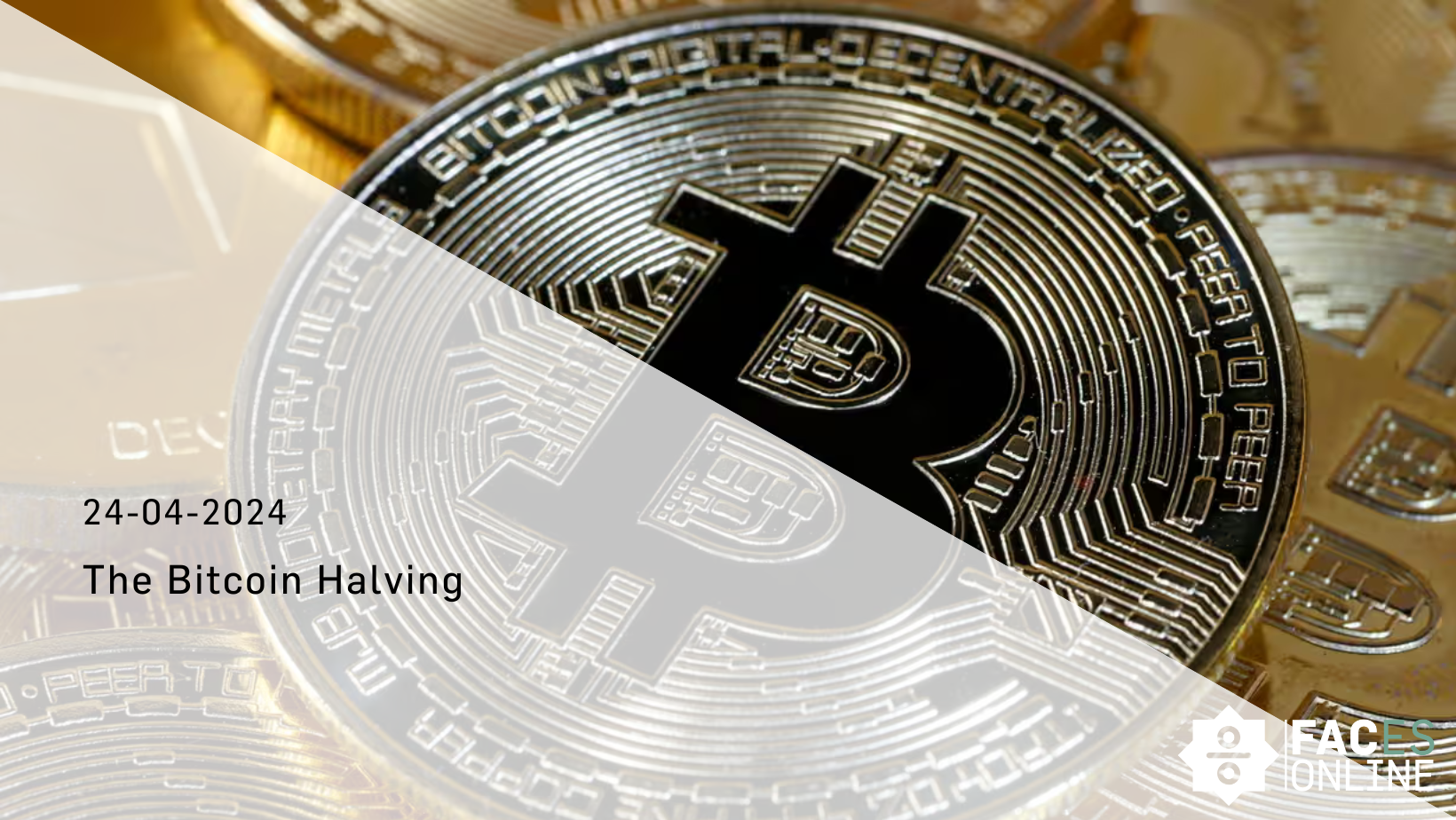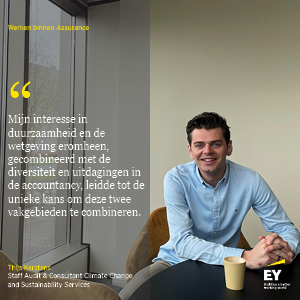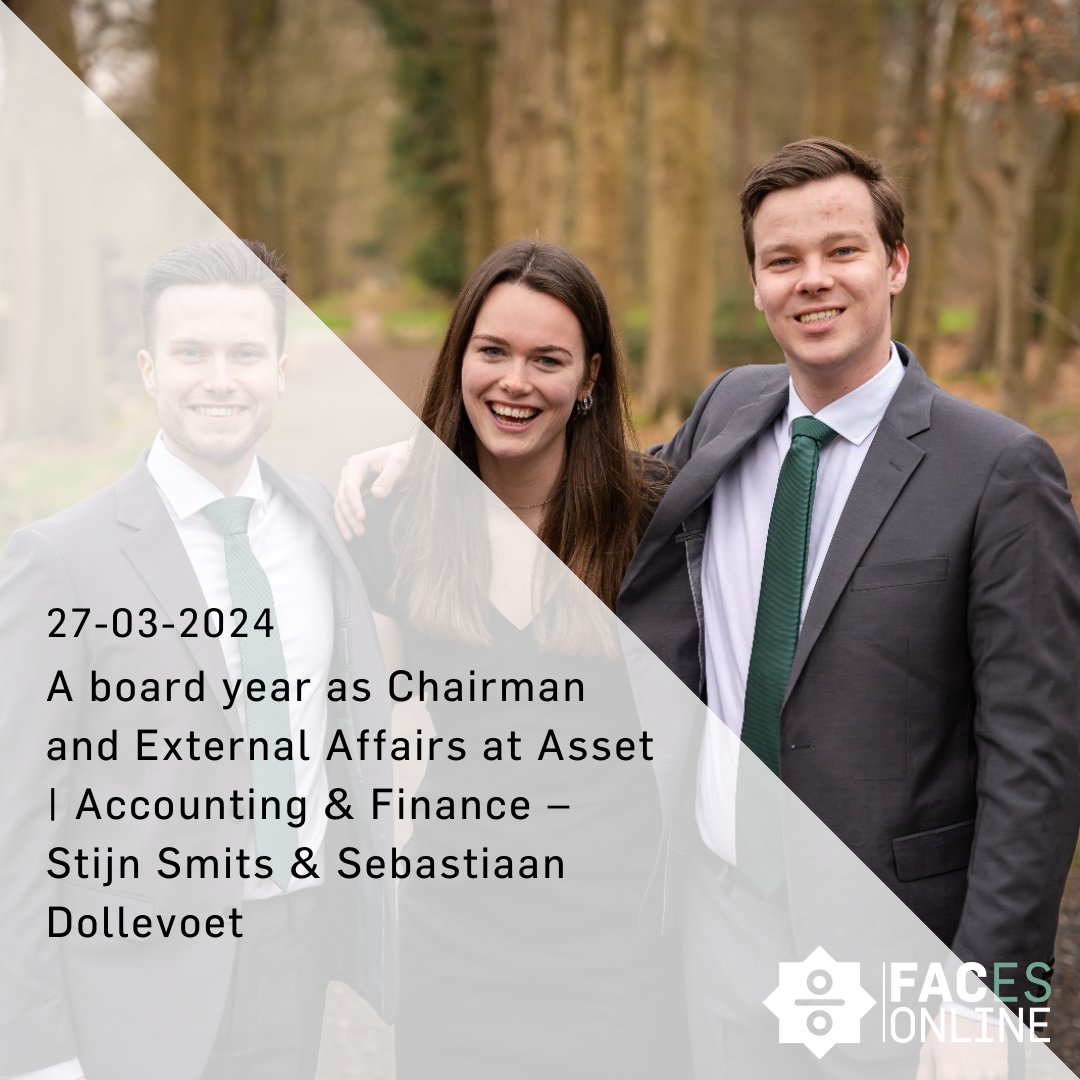Disclaimer: This article is for entertainment purposes only and cannot be used for financial advice. Since its inception, Bitcoin has caught the

Goldman Sachs Asset Management (GSAM) B.V. is the Dutch asset management arm of Goldman Sachs. GSAM offers various investment strategies to investors, with a focus on equities, fixed income, quantitative solutions, alternative investments and multi-asset solutions. Two of our alumni were asked 10 questions in this interview.
1) How did you go through your studies and what was the transition like from being a student to your first job?
Patrick den Besten: ”I started studying economics in 1992, and eventually graduated in 1997. I graduated in Money, Credit & Banking. During my studies, I worked at Staalbankiers, where I was responsible, together with their macroeconomic office, for creating a macroeconomic vision. Equities and investing have always been interesting to me. Early in my career, I transitioned smoothly from working at Staalbankiers to the Strategy/Asset Allocation team at Aegon Asset Management. At the time, this was one of the partners of the university. Just before the end of the dotcom bubble (March 2000, ed.), I moved to the Equity team at ING Investment Management. The study in Tilburg was very practical and for me, it helped to create a smooth transition to the workplace.”
Gerald Cartigny: ”I started at Tilburg University in 1984, and in 1989 I graduated in business economics with a focus on corporate finance. I ended up taking five years to complete the degree, due to a board year at the sports organization Pendragon. At the time, one of my professors suggested me to do an internship; that’s how I ended up at the NMB (Nederlandse Middenstands Bank, ed.), where I researched the topic of Eurobonds. This was a new phenomenon at the time, and the NMB commissioned me to research this by surveying all the important investors in the Netherlands. This turned out to be a great advantage because when I finished at NMB, three of the parties I visited offered me a job spontaneously. By coincidence, with this internship and job offers, I ended up in the investment world. At the time, I chose Nationale Nederlanden, already a big investor during that period. I started in the department that manages the portfolio of the insurer. So, for me, it was also a very smooth transition.”
2) What are the most important lessons, skills and habits that you picked up during college that you still benefit from?
Gerald Cartigny: “The board year at Pendragon was very helpful, the dynamics there ensured that you had to be able to communicate with everyone, tune in and take action. Later in my career I worked in the US for 3 years, which brought a lot of enrichment. The activities alongside my studies were important and I learned a lot because of it.”
Patrick den Besten: “What I learned the most from was my internship at the Staalbankiers. There I was able to engage in discussions with the people who were in control. I was in the dealing room, which was quite small. But what I learned in theory, I tried to put into practice, which was very beneficial. Above all, engage a lot in conversation with fellow students, and be involved in different things. I got a lot of pleasure out of doing projects with other students and engaging in discussions with my professors. Try to seek other perspectives: don’t take things for granted. Engage in discussions, even during your first job. I think that’s very important to make sure you become very well-rounded, which requires you to do more than just exams and studying.”
Gerald Cartigny: “One more addition, I learned the following during my board year: if you want to do something, you have to be proactive. That applies to your entire career. Nothing comes to you, there are lots of opportunities for all students, but you need engage actively. Take advantage of these opportunities and be curious; that is also something we (GSAM, ed.) look out for in the people we hire.”
3) What does the corporate culture look like within GSAM?
Patrick den Besten: “For me, the following aspects are important:
First of all, expertise;
Don’t sit around, show initiative;
And drive, we want to see energy.
I think this is important within every company. But for large companies, leaders in their market segment, these are the people they need to make sure they stay the best.”
Gerald Cartigny: “To illustrate: Goldman Sachs is a global company with about 45,000 employees, we hire about 3,000 graduates every year. These hires come from a selection of about a million letters we get. In those letters, almost everyone qualifies based on studies and secondary activities. However, in order to hire those 3,000 individuals, for one position we sometimes interview 15 people. We check if the candidates show that they are motivated, but also that they enjoy working with us. And that’s also what Patrick says: the “eagerness” has to be really evident because the difference on paper keeps getting smaller and smaller between students. When you are applying, you have to think about your presentation and preparation, but you also need to know what you exactly want. If you don’t know what you want, then it’s pretty hard to get concrete with a company.”
4) What does the Chief Risk Officer do on a day-to-day basis?
Patrick den Besten: “As an asset manager, you manage risk for two main categories: operational and financial risks. Financial risks arise as a result of our investments in equities, derivatives and bonds in the financial markets. Thus, I work daily with the portfolio management team to evaluate the state of the portfolios.
During unique events, such as geopolitical developments, we work even closer together. On the other hand, there are operational risks. We manage clients’ money, including large institutional clients and individuals who invest in funds. As a risk management team, we make sure that the funds we manage are invested according to the agreements made with the clients or as stipulated in the prospectus for a specific fund. This brings us to the second pillar, the operational risk management. Just as in (large) firms such as Shell and Unilever, we need to ensure that processes run efficiently, and mistakes are avoided. My team performs controls in the process and contributes to its design.
We strive to manage various risks, including market and credit risks, regulatory risks, and reputational risks. As a company, especially in the financial sector such as Goldman Sachs, we must be aware of our role in the financial market. The risk and compliance team plays a crucial role in protecting our company from several risks.”
Gerald Cartigny: “No company can function without proper risk management and risk frameworks. This is crucial, especially when you look at publicly traded companies, including Goldman Sachs. Goldman has been around for about 150 years now; you can only exist that long if you are future-proof. Futureproofing is not only related to profit but also to avoiding mistakes and dealing with risk. That is a crucial framework and risk management should keep everyone from making big mistakes, not only for your own company but also for your customers as Patrick points out.”
5) How do you look at new technologies?
Patrick den Besten: ”In the world of finance, new technologies equal both risks and huge opportunities. It is noticeable that the financial industry is sometimes somewhat behind in implementing these new technologies. This is partly due to the strict regulation of the industry, the importance of the industry to the economy, and the fact that as financial professionals we have a fiduciary duty to our clients. We need to be careful about embracing new technologies. As crucial players in the global financial landscape, we are under strict scrutiny, and we must proceed thoughtfully.
However, whether you are a bank, wealth manager or an asset manager, there are countless opportunities to take advantage of new technologies, such as AI tools. At Goldman Sachs, we have used technologies such as machine learning to extract information from a variety of sources, such as contracts, newspapers, and web scraping. With these, we try to retrieve information about the companies we invest in through a variety of sources on the internet. This enables risk and portfolio managers to improve their investment decisions. In addition, this technology is used to monitor compliance statements, with individual groups within the company charged with these critical tasks.
Both within the investment banking and asset and wealth management divisions, we are actively exploring opportunities in new technologies. Doing so involves various disciplines, including business, legal and compliance.
Although we must be vigilant because of our fiduciary responsibility and our crucial role in the financial system, I am convinced that there is great potential for innovation throughout the financial world.”
6) We also looked at your website and we saw the following definitions; ”climate investing 2.0” and “solutions such as European equity and investment grade credit, sustainable investments and green bonds”, can you explain these definitions with practical examples?
Gerald Cartigny: “Climate investing, or allocating capital to reduce the impact of climate change, has been a relevant topic since 2015. My involvement began with a role as a speaker in Paris, when the important Paris Climate Agreement was signed. In the initial phase, called climate investing 1.0, the focus was primarily on excluding the most polluting companies. While this was a simple approach, it did not offer an ideal solution; it only solved the problem for the individual investor, not the world.
With climate investing 2.0, the focus shifts to inclusivity. It is no longer just about exclusion, but it involves actual improvement. This means investing in companies that are actively taking steps to reduce carbon emissions. The difference in approach is crucial. In the current version, 2.0, more nuance is added and the emphasis is on proactively addressing climate change. It is a dynamic approach that focuses on the latest scientific developments and technological advances.
Green Bonds are normal bonds, similar to other bonds issued by corporations, governments or quasi-governments. What make Green Bonds unique is that the proceeds of the loan must be spent specifically on an environmentally friendly project. This project must be defined and certified in advance, which means that there are controls in place to ensure that the proceeds are spent on what is stated in advance. This constitutes the only difference from a regular bond; otherwise, it works similarly.
Both companies and governments issue Green Bonds to ensure actual investments in environmental projects and underscore their commitment to addressing climate change. At Goldman Sachs Asset Management, we currently manage approximately $10 billion in assets in Green Bond strategies worldwide. It allows investors to actively contribute to environmentally friendly initiatives while earning returns. It’s a tangible way to make a green impact in line with financial goals.”
7) Can you name any specific skills that are required to work at Goldman Sachs?
Gerald Cartigny: “If you’ve read the books about Goldman, you’ll see that we’ve been around 150 years. Initially, it was a partnership, and the partnership still exists even now that we are a publicly traded company. This means that decisions are made after extensive consultation with many people. This is only possible thanks to excellent communication within the company. The mantra is, “Make sure you ‘over’-communicate and include everyone.” And this goes far beyond just your supervisor or colleagues; it extends across country and functional boundaries. Comprehensive communication is required, which can be time-consuming, but it is an essential part of Goldman Sachs’s DNA and culture.”
8) Goldman Sachs has a co-CEO, how does this governance structure function?
Gerald Cartigny: “In the Netherlands, the phenomenon of co-CEOs is rare, whereas it is more common in other Anglo-Saxon companies, and at Goldman Sachs, it occurs regularly. This phenomenon can be explained by several factors and has several advantages:
First, consistency of leadership: At Goldman Sachs, there is a consistent transfer of leadership. When someone leaves, whether through an internal shift, external movement or retirement, there is always someone who can take over his/her position and ensure continuity.
Secondly, career development: It is a way for employees to have career advancement. For example, when there are two strong candidates for a leadership position, the company may choose not to make a choice and instead create a co-head structure. This allows both candidates to gain leadership experience, which serves as a form of career guidance.
More important is the principle of complementarity. Co-CEOs are selected based on complementary qualities, thus reinforcing each other. This requires close coordination, constant communication, and consensus. Both CEOs need to be on the same wavelength in order to achieve both internal and external consistent policies. Constant dialogue between co-CEOs contributes to the sharpness of decision-making.”
Patrick den Besten: “I think the concept of co-CEO positions is inherently in line with the corporate culture of Goldman Sachs. The company values deep knowledge and challenge. Creating co-CEO or co-head positions creates natural discussions between specialists, which can lead to improved decision-making. Although these discussions sometimes take time, we as a company consider this an acceptable investment because we believe that bringing people together ultimately leads to better decisions. As Gerald also emphasizes, communication is critical. If I were to advise people who want to work at Goldman, I would say that strong communication skills are essential. This applies not only horizontally, but also at different levels. In meetings, junior colleagues share their expertise with me, and the ability to effectively communicate with stakeholders is very important… So, making sure you are well prepared and able to effectively communicate, those are the two most important messages in my opinion.”
Gerald Cartigny: “To add to that: we expect from both the partners and everyone else, to take collective responsibility for the entire company. Also, everyone is open to feedback and initiatives. This implies that each member of the organization is approachable. If you come in as a junior and have a good idea, you can easily step up to a managing director. You can email, Zoom in, or just walk in, it’s very normal. This approachability facilitates the transfer of knowledge. As a senior leader, you are expected to pass on your knowledge to the next generation; it’s part of the DNA of Goldman Sachs. So, communication is not only important, but what you get in return is access to basically everyone. In comparison to other companies that are often hierarchically organized, Goldman Sachs is much more accessible.”
9) If you were 20 again, would you have done something differently?
Gerald Cartigny: “No. Everything happens for a reason. When I look back on my career, now I see a journey with highs and lows, which is far from a linear path. But honestly, I wouldn’t have done things differently.”
Patrick den Besten: “No, neither would I. But what I would probably recommend to anyone, is to work for a company abroad for a while and gain expertise from another culture, especially at a younger age and if you have the opportunity. That’s such a valuable experience which can be beneficial for your career. I didn’t get the possibility to work abroad, but I think there are a lot of benefits that can be gained by doing this early in your career. So, I would recommend that. Anyway, you can always look back on things, but having regrets doesn’t make much sense. I have a great job.”
10) Do you have a final message for students?
Gerald Cartigny: “I would like to share one more piece of advice, and that is: don’t underestimate the first 3 years of your career after graduation, because those years are crucial for your further trajectory. Think carefully about what that could mean for you and how you are in life. Just as a baby’s brain, which is crucially shaped in the first stage, the same is true regarding your career. So be extremely careful in what you want to do and make sure you learn a lot and absorb knowledge during that period.”
Patrick den Besten: “I don’t think it is limited to the first 3 years; you should always ask yourself where you stand and why you are working at a particular company. I sometimes find it short-sighted to base choices solely on a possible salary increase of 5 to 10 percent elsewhere. The intellectual value you can gain by working with smart people at a leading company, and the opportunities that follow, can be much more valuable, this is what I regularly advice to young colleagues.”





















